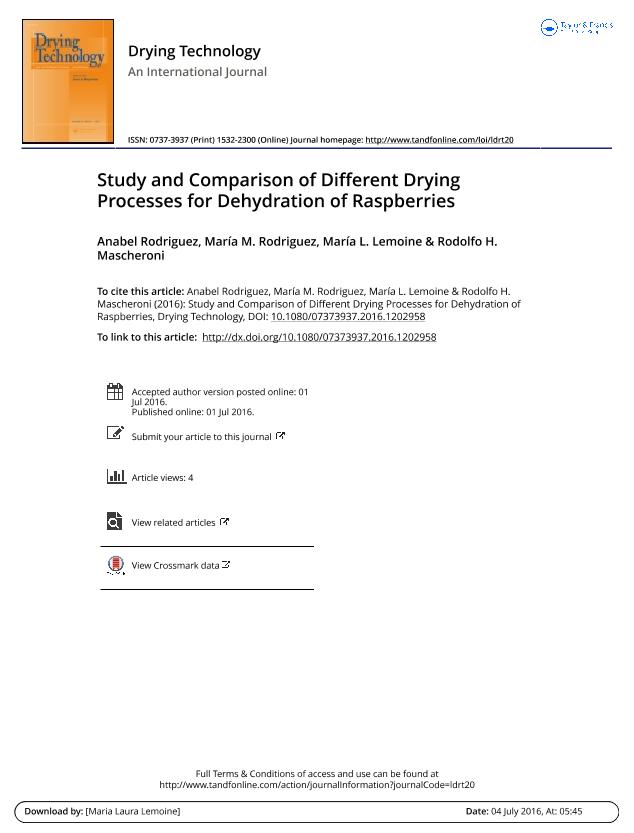Artículo
Study and comparison of different drying processes for dehydration of raspberries
Fecha de publicación:
04/2017
Editorial:
Taylor & Francis
Revista:
Drying Technology
ISSN:
0737-3937
e-ISSN:
1532-2300
Idioma:
Inglés
Tipo de recurso:
Artículo publicado
Clasificación temática:
Resumen
The aim of the present study was to evaluate and compare different drying methods (microwave, hot air + microwave, and osmotic dehydration + microwave) in raspberries (cv. Heritage). A portion of raspberries was pretreated with osmotic dehydration (60°Brix sucrose solution at 20°C for 360 min) and another with hot air drying (HAD) (1.5 m/s air speed at 60°C for 300 min). Pretreated raspberries were then dried by microwave and at three different intensities (3.5, 7.5, and 11 W/g). Physicochemical properties (moisture content, water activity, and drying rate) and quality parameters (optical properties, mechanical properties, antioxidant capacity, and rehydration capacity) of dried raspberries were evaluated. Results showed that the microwave drying (MWD) at 7.5 W/g (50 min and final temperature of 79 ± 5.1°C) allowed a high yield of dried raspberries. The combined processes were not efficient to accelerate the decrease of moisture content, due to the low drying rate of the pretreatments. In terms of quality, none of the drying processes allowed a high retention of the antioxidant capacity. However, they allowed an appropriate rehydration performance. The combination of HAD with MWD allowed obtaining a good appearance and desirable texture on the dried product. Thus, this last option seems to be the best among the drying methods tested, but additional studies are required to improve the efficiency of the process and the effect on the antioxidant capacity during drying.
Palabras clave:
Combined Drying
,
Drying Rate
,
Quality Parameters
,
Raspberries
Archivos asociados
Licencia
Identificadores
Colecciones
Articulos(CIDCA)
Articulos de CENTRO DE INV EN CRIOTECNOLOGIA DE ALIMENTOS (I)
Articulos de CENTRO DE INV EN CRIOTECNOLOGIA DE ALIMENTOS (I)
Citación
Rodriguez, Anabel; Rodriguez, Maria Marcela; Lemoine, María Laura; Mascheroni, Rodolfo Horacio; Study and comparison of different drying processes for dehydration of raspberries; Taylor & Francis; Drying Technology; 35; 6; 4-2017; 689-698
Compartir
Altmétricas




